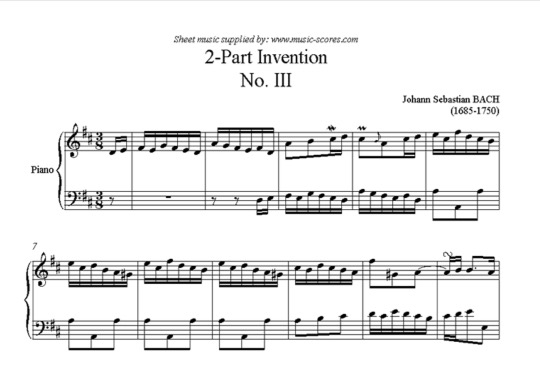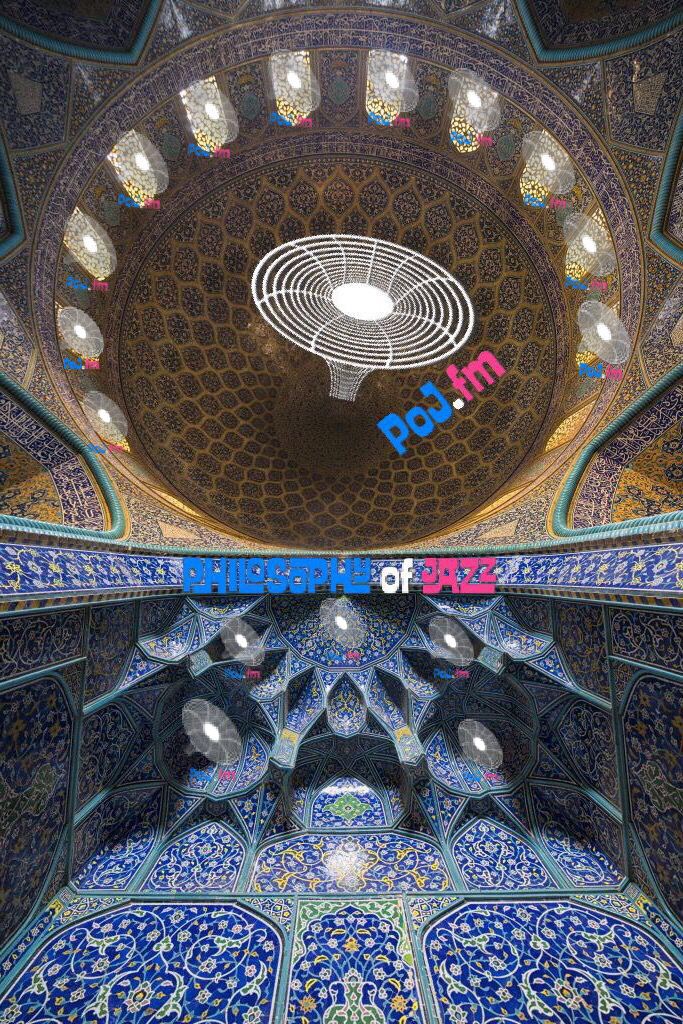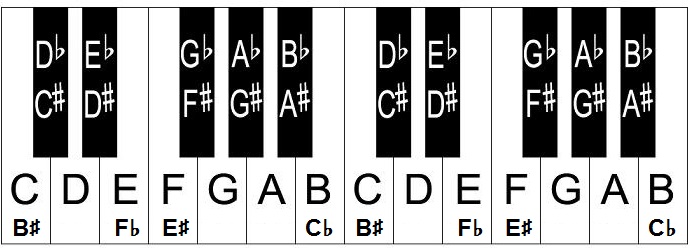Difference between revisions of "Ontmusic00. Music Basics"
(→Harmony) |
(No difference)
|
Latest revision as of 02:49, 31 January 2021
What does a person need to know about music so as better to understand the philosophical issues involved with jazz? What are the elements of music and how do they relate to jazz?
Contents
- 1 Three Major Elements of Music
- 2 Musical Terminology defined
- 2.1 There are Different Kinds of Musical Scales:
- 2.2 Tonality
- 2.3 Jazz Hybridizes the European Diatonic Scale with the Blues Pentatonic Scale
- 2.4 Chord Progressions
- 2.5 What is Ragtime?
- 2.6 What is the Groove?
- 2.7 What Else is Distinctive of the Jazz Process?
- 2.8 Final Conclusions About Jazz
- 2.9 Internet Resources on Music
- 2.10 NOTES
Three Major Elements of Music[edit]
I. MELODY
II. HARMONY
III. RHYTHM
Melody[edit]
I. MELODY: A succession of single notes played one note at a time. An example is when Beyoncé sings she sings one note at a time.
- NOTE: is an identifiable and stable frequency of sound vibrations.
Contrastive demonstrations would be:
• Talking is not speaking in notes because there are not stable identifiable singular frequencies.
• Striking the top of the piano is not a clearly identifiable frequency.
• But playing a C note on the piano is a stable and identifiable frequency.
SCALE: A group of notes, but not struck simultaneously, and arranged in a step sequence.
• Chords are the building blocks of harmony in jazz.
• Scales are the building blocks for melody in jazz.
“Scales are collections of notes arranged in patterns of half-steps, whole-steps, or other intervals. Composers and improvisers use scales as pitch resources in their music. They choose specific scales and choose notes from those scales to form melodies and harmonies in their music. An example of a scale is a Major Scale. A major scale has the following arrangement of half-steps (H) and whole-steps (W): W-W-H-W-W-W-H.
Starting this pattern on the note D we get a D Major scale: D, E, F-sharp, G, A, B, C-sharp, D.
This is just one of the many possible scales but all scales work in the same way.[1] (bold not in original)
List of Scales:
Chromatic scale
Major scale
Minor scales
Pentatonic scales
Whole-tone scale
Octatonic scale
Harmony[edit]
II. HARMONY: occurs when one can hear more than one note at any given moment.
• Harmony can be demonstrated on a piano by hitting two notes, or playing a chord, or even striking multiple keys with an elbow simultaneously.
• In jazz, harmonies usually consist of chords.
• A CHORD is a group of notes played simultaneously.[2] This can be demonstrated on the piano. Usually chords consist of the simultaneous sounding of three or more notes at a time, but two notes played simultaneous would still technically count as a chord.
At Music Theory by Komponist we get this explanation of chords.
“Chords are notes played simultaneously. The most commonly used chords are constructed from stacked thirds. Chords can also be constructed from seconds, fourths or fifths but these types of chords are less common. The most basic type of chord is a triad, a chord made of three notes built from stacked thirds. Each triad contains a chord root, and notes a third and a fifth above the root.
Basic chords:
Seventh Chords:
If we stack another third onto any of the basic chords, adding an interval of a seventh above the root, we now have Seventh Chords.[3] (bold not in original)
The chords every piano and keyboard player should know are the basic Major, minor, Augmented, and diminished chords, and seventh chords. These are the most common chords and are relatively easy to play.
These chords are shown with the root note C. Other root notes are possible by transposing these chords. For example, a C Major chord (C, E, G) can be transposed to D. This will result in a D Major chord (D, F-sharp, A).These chords are constructed from musical intervals. Each chord has:
A Root note
A note a Major third (M3) or minor third (m3) above the Root
A note a Perfect fifth (P5), Augmented fifth (A5), or diminished fifth above the Root
And seventh chords also have a note a Major seventh (M7), minor seventh (m7), or diminished seventh (d7) above the Root.
The basic chords:
Major - Root, M3, P5
minor - Root, m3, P5
Augmented (Aug) - Root, M3, A5
diminished (dim) - Root, m3, d5
The seventh chords:
7 - Root, M3, P5, m7
M7 - Root, M3, P5, M7
m7 - Root, m3, P5, m7
dim7 - Root, m3, d5, d7
half dim7 - Root, m3, d5, m7
Example:
If we choose a Major chord for example we begin by picking a Root note. We could pick any of the 12 notes but in this case we will choose G. The next note we need is a Major third (M3) above the Root, which in this case would be the note B. The final note we need is a Perfect fifth above the root, which in this case would be the note D. Now we have all three notes of our Major chord: G, B, and D.
For reference here is a diagram of the keyboard with the note names on it:[4] (bold and bold italic not in original)
Using a Bach musical score one can contrast the horizontal and vertical elements of music.
• The music on the page is both horizontal (side to side) and vertical (up and down). Harmony is often said to refer to the "vertical" aspect of music, as distinguished from a melodic line, or the "horizontal" aspect.[5]
Rhythm[edit]
III. RHYTHM: is the timing of sound events. It is how the sound events are ordered in time.
➢ How are these musical events normally ordered rhythmically?
BEAT: is a steady pulse that other rhythms are fitted to. Snap fingers to demonstrate (faster/slower). Without a beat, syncopation is not possible, at least by definition.
➢ Are there other rhythmic units in addition to the beat?
TEMPO: is the speed of the beat. Often there is emphasis on the first beat (beat one) that is more felt than heard. The downbeat is the emphasized beat done on beat one.
MEASURE: is a group of beats often starting with a strong beat on beat one. A measure can be demonstrated on a piano with bars of 4/4 time. One can use Liberace playing “Chopsticks” with a three beat measure as a demonstration as well.
At "Examples of Rhythm in Music" by April Klazema, European and African rhythms are well explained and described.
Western Musical Rhythms:
“European and other Western music uses a time signature, or meter signature, to measure the rhythm of a particular piece of music. One of the most frequently used time signatures in rock, blues and other forms of pop music is 4:4 time, also known as common time. This means that there are four beats per measure (this is the first 4 in the signature, usually written as a numerator), and the unit being used for each beat is the quarter note (this is the second 4, or the denominator). This is the basis for a wide range of dance music and is one of the most frequently used base rhythms. Keep in mind that although the unit of measurement here is the quarter note, not all of the note lengths in a typical piece of music will be the same.A slightly different form of 4:4 time, typically used in marches and other military music, is 2:4 time, using shorter measures than 4:4 time and therefore moving more quickly; the easy division into twos is what makes it work well for march music.
Another common rhythm used in Western dance is 3:4 time, also known as waltz time for its main use. Although more typical of older, classical music, it is often used in a number of ballad forms, being more associated with slower, more contemplative music and less obviously energetic dance forms.
6:8 time, which is a doubled version of 3:4, is used in more energetic dance music, such as polkas, jigs, and some rock pieces. In this case, the beat is based on eighth notes rather than quarter. The effect that this tends to create is to divide the measures into two set of three beats, with heavier downbeats on the first and fourth counts, creating a feeling of greater speed even when the tempo isn’t increased.
African Musical Rhythms:
Unlike Western music, many forms of music from Africa tend to include a stronger focus on percussion. . . . Music from many parts of Africa, particularly drumming, can often center on the tension between two different rhythms being played by different musicians at the same time known as polyrhythmic music. There is often a dominant rhythm, with potential for interplay between what can be a number of other competing rhythms. The meaning of polyrhythmic music comes from the interplay between parts, as opposed to the interplay of melody and harmony more typical of Western music. Polyrhythmic music also tends to be associated very strongly with dance, and can play an important role in the spiritual life of the broader culture.One of the more common sub-Saharan patterns is a triplet played over the space of two beats rather than the space of one, as would be typical of Western music. This is a type of rhythmic cell also frequently used in Cuban and Afro-Caribbean music, where it is known as tresillo, having been brought by Africans [during] the slave trade.
The tresillo is one example of a type of five-beat rhythmic pattern, known as a clave, which forms a staple of rhythmic organization throughout Afro-Cuban music. A clave can be used in a variety of time signatures, in either double- or triple-pulse patterns. Similar types of five-beat patterns can be seen in Brazilian bossa nova, where they were also brought over by African slaves. From Afro-Caribbean music, the clave rhythm spread in the twentieth century into North American jazz and popular R & B, where it is sometimes known as a Bo Diddley beat after one of the better-known practitioners (in songs like “Who Do You Love”) and can be heard in conventional pop and rock work like Buddy Holly’s “Not Fade Away”.[6] (bold not in original)
Timbre[edit]
TIMBRE (prounced TAMber and not like "timber" meaning wood): (also known as tone color or tone quality) is the perceived sound quality of a musical note, sound, or tone. Using perceived timbre permits listeners to distinguish different types of sound production, such as choir voices or the distinctive acoustic features of musical instruments. It is timbre that enables listeners to hear 👂 different instruments from the same category as different, such as a viola and a violin.
Musical Terminology defined[edit]
What is an interval?
- An interval is the distance from one note to another. Below is a table of some standard intervals.
| Interval Name | Interval Description |
|---|---|
| Minor 2nd |
distance ½ tone from tonic
|
| Major 2nd |
distance 1 from tonic
|
| Minor 3rd |
distance 1 ½ from tonic
|
| Major 3rd |
distance 2 from tonic
|
| Perfect 4th |
distance 2 ½ from tonic
|
| Augmented 4th or Diminished 5th |
distance 3 from tonic
|
| Perfect 5th |
distance 3 ½ from tonic
|
| Augmented 5th or Minor 6th |
distance 4 from tonic
|
| Major 6th |
distance 4 ½ from tonic
|
| Minor 7th |
distance 5 from tonic
|
| Major 7th |
distance 5 ½ from tonic
|
| Octave |
distance 6 from tonic
|
What is a scale?
- A scale is a set of notes, based on a tone (central note), which is organized in steps (tones and semitones) around this tonic.
What is a chord?
- A chord is a set of sounds (notes), typically three or more, played simultaneously, but two notes played together would still technically be a chord.
What is an arpeggio?
- An arpeggio is a broken chord (a chord broken into a series of musical notes) that consists of a set of notes of a chord played in sequence and going up or down in tone.
What is a pentatonic scale?
- A pentatonic scale is a musical scale based on five notes. There are both minor pentatonic scales and major pentatonic scales.
The seven modes of a major scale have been named after ancient Greek tribes as follows:
- 1. Ionian mode, Ionian scale, Major scale
- 2. Dorian mode, Dorian scale
- 3. Phrygian mode, Phrygian scale
- 4. Lydian mode, Lydian scale
- 5. Mixolydian mode, Mixolydian scale
- 6. Aeolian mode, Aeolian scale, Minor scale
- 7. Locrian mode, Locrian scale
- 1. Ionian mode, Ionian scale, Major scale
- See the Improviser's Manual by Theodosios Kosmidis, available on Scribd at http://www.scribd.com/book/268756390.
There are Different Kinds of Musical Scales:[edit]
European scales are diatonic scales consisting of seven notes or tones labeled with the letters A, B, C, D, E, F, and G. The notes can be demonstrated on a piano.
Pentatonic scales use only five notes.
• Different countries often use distinctive pentatonic scales:
- China: CDEGA
- Japan: CDE♭GA
- India: EG♯ABD
- Africa: CDFGA
• Examples using this African musical scale are “Amazing Grace” and “No One Knows the Trouble I’ve Seen.”
Tonality[edit]
- See the Wikipedia article on "Tonality" to better understand about what determines a musical tonic, root, and key signature.
- "What Is Tonality?," David Pitt, International Journal of Musicology 4, ("A Birthday Offering for George Perle", edited by Gary S. Karpinski), 1995, 291–300.
Jazz Hybridizes the European Diatonic Scale with the Blues Pentatonic Scale[edit]
➢ Why are scales important for understanding jazz?
Jazz comes out of a clash of scales. Jazz is an offspring of the Blues and the Blues was a result of the hybridization of the diatonic and pentatonic scales.
➢ What is meant by hybridization of the two musical scales?
Hybridization combines two or more distinct types into a new combination that synthesizes them together. Early African-American blues musicians combined diatonic European harmony with African pentatonic melody at the dawn of the 20th century. Examples would be taking a hymn with diatonic harmonies and then playing it with an African pentatonic melody, which, in effect, bluesifies it.
- • Synthesis occurs when one combines separate elements to form a coherent or well ordered whole.
- • Blues music results from the synthesis of diatonic harmonies with pentatonic melodies.
– A blues scale is a variation on the African pentatonic scale. This can be demonstrated on the piano with a blues in the key of F.
➢ Why was that a blues progression? What form does it have that makes it a Blues?
- • It is a Blues because it has a 12-measure structure with certain chords appearing necessarily at certain points in the structure.
- • Blues uses the blues scale for its melodies. The blues scale is an adaptation of the African pentatonic scale, which includes the flatted fifth.
Chord Progressions[edit]
CHORD PROGRESSIONS: are the set of chords (the chord sequence) used in a song.
- • The blues structure is an example of a chord progression. Another example would be using “Rhythm Changes,” that also has a different “form.”
- • FORM: is the order of repeating and contrasting sections of music in a song.
- • AABA (bar) form: consists of a 32-measure form with 8-measure sections (A, repeated A, B, repeated A.)
- • SYNCOPATION: Emphasis on the weak beats or on the off beat is essential to the process of jazz playing and results in one of the elements of surprise found in jazz. Syncopation can be demonstrated with “The Saints Go Marching In” which sounds like a ragtime type of song. Be sure to check out What is Syncopation?
What is Ragtime?[edit]
RAGTIME: Often these types of songs are syncopated marches. Ragtime began in late nineteenth-century America played by Afro-Americans in a style characterized by elaborately syncopated rhythm in the melody with a steadily accented accompaniment.
- • An example would be Scott Joplin’s tune “The Entertainer” made famous in the movie “The Sting.”
- • Jazz comes from Ragtime which stresses “ragged time” – a kind of off-beat syncopating – and this is where early jazz learned how to syncopate.
➢ Modern jazz doesn’t really have this same type of time feel as ragtime. Why not?
- • The reason is because more modern jazz uses a different groove or rhythmic feel.
What is the Groove?[edit]
• GROOVE: is the set of rhythmic patterns that make up the dance feel of the music. This can be demonstrated using rock or a cha-cha-cha.
Be sure to check out Onttech1. What is the groove?
➢ What groove does more modern jazz use?
SWING FEEL: There is often a “walking” bass line and weak-beat syncopation, combined with “triplet” off-beat syncopation.
CONCLUSIONS: Two of the most distinctive elements of jazz (although not unique to jazz) are a syncopated groove and the blues influence (incorporated from ragtime and the blues.)
What Else is Distinctive of the Jazz Process?[edit]
IMPROVISATION: consists of producing a concurrently composed performance – music made up at the moment without mirroring a previously composed composition. Improvisation can mean the same thing as extemporization. Click on Ontimpr1. What is improvisation? for a more detailed discussion.
• Improvisation can be demonstrated using “When The Saints Go Marching In” by playing it ‘straight’ and then contrasting this with an improvisation of the chord structures and other elements such as syncopation. The improvisation will not be the same as the written score and it adds interest and surprise to the musical performance as well as to the musical experience of the listeners.
• When one improvises one typically adds that element of surprise to any anticipations that listeners may have had from having heard the song played previously.
• This is partially what Whitney Balliett had in mind when he described jazz as “the sound of surprise.”
• This sort of surprise is different from Joseph Hayden’s “Surprise Symphony” where there is basically only a brief moment of surprise.
• Jazz is a music that can consistently and constantly surprise not only the listener, but ‘surprisingly’ also the performer. Charles Otwell was once listening to a playback of some jazz and he asked the engineer “Who was the musician playing that interesting piano solo?” and the engineer replied: “It was YOU!”
Final Conclusions About Jazz[edit]
The three major features characteristic of jazz (although not exclusive to jazz) are:
- Improvisation: Music made up in the moment and not entirely planned in advance and performed while being composed.
- Syncopation: Emphasis of weak beats or on the off-beat.
- Blues Influence: Early African-American music (end of 1800's) featuring African melodies with European harmony and improvisation. The African elements of the blues stressed an emphasis on rhythm, with pentatonic melodies and occasional buzzes and growls, etc., while the European features emphasized form and harmony, diatonic harmonies and a diatonic musical scale, and the development of the majority of musical instruments used in jazz.
For information on how these three components of jazz (hybridization of the diatonic and pentatonic scales, syncopation, and improvisation can be used to develop a definition for jazz see Ontdef3. What is the definition of jazz?, especially The Galactic Model for Defining Jazz.
Internet Resources on Music[edit]
- Wikipedia's List of Musical Symbols
- Berkleejazz Wiki: Music Theory by Categories
- The Jazz Resource's "Basic Music Theory"
- The Jazz Resource's "Jazz Theory"
- MusicTheory.net Lessons
NOTES[edit]
- ↑ "Scales" at Music Theory blog by Komponist.
- ↑ This definition of chord is given at The Free Dictionary.com.
- ↑ "Chords" at Music Theory Blog by Komponist.
- ↑ "Basic piano chords" at Music Theory blog by Komponist.
- ↑ See Deborah Jamini, Harmony and Composition: Basics to Intermediate, 147. ISBN 1-4120-3333-0.
- ↑ "Examples of Rhythm in Music," April Klazema, Udemy Blog course, accessed March 14, 2014, updated since then on February 2020.













